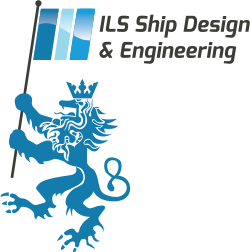Later CCGS VINCENT MASSEY, CCGS CAPTAIN MOLLY KOOL, CCGS JEAN GOODWILL
Main dimensions:
Length, max: 83.7 m
Breadth: 18.0 m
Draught: 8.5 m
Main machinery: 2 x 6,720 kW
Propulsion: 2 x Kamewa CPP
Bollard pull: 200 t
Etusivu » TOR VIKING class icebreakers
The Swedish Maritime Administration (SMA) commissioned ILS as an icebreaking consultant in 1998, when SMA, together with Bylock-Nordsjöfrakt Ab, began to design a multipurpose icebreaker whose main task would be to act as an Offshore Support Vessel, and which had to be ready to perform icebreaking work during the winter, serving traffic to Swedish ports south of Stockholm. The well-known OSV design company Moss Maritime was chosen as the main designer of the ships, and our task was to design and optimize the ship’s icebreaking capabilities so that the main task as an offshore ship is also handled without problems. We were responsible for:
– Optimizing the ship’s hull lines to suit icebreaking
– Optimizing the ship’s machinery and propeller systems to be suitable for icebreaking
– Participation as a client’s consultant in open water model tests in Norway
– Planning and implementation of ice model tests in the ice model test pool of the University of Technology in Otaniemi, Finland
– During the construction of the ship at the Havyard Leirvik shipyard in Norway, consulting the client in matters related to icebreaking
– After the handover of the ship, the planning of ice trials and their execution with measurements in Bay of Bothnia.
Tor Viking II was completed at the shipyard in 2000. Two sister vessels followed, Balder Viking and Vidar Viking, in 2000-2001.
The ship turned out to be an excellent icebreaker due to its hull shape, two straight shaftline propulsion and powerful rudders. The large controllable pitch propellers in nozzles experience rarely clogging, and the high bollard pull capacity, around 200 t, helps to maintain a good speed in heavy ice conditions. In the ice trials, the “Duck walking” function – the tilting of the ship with the help of rudders, developed by SMA, to prevent getting stuck in the ice – was also tested with good results. During the ice trials, the ship’s CP propellers were programmed with their own mode, which kept the thrust optimal in different ice conditions.
ILS Oy / Turku
Puutarhakatu 45
20100 TURKU
FINLAND
Tel: +358 2 4172 200
ILS Oy / Helsinki
Hitsaajankatu 22
00810 Helsinki
FINLAND
Tel. +358 50 440 8630

© 2024 ILS Ship Design & Engineering.